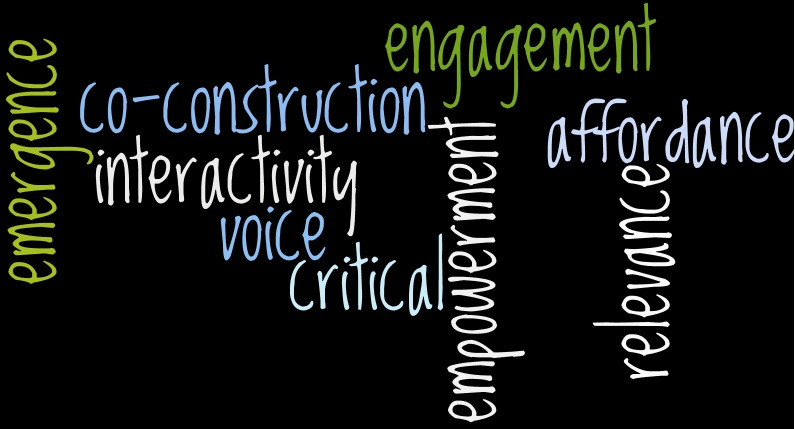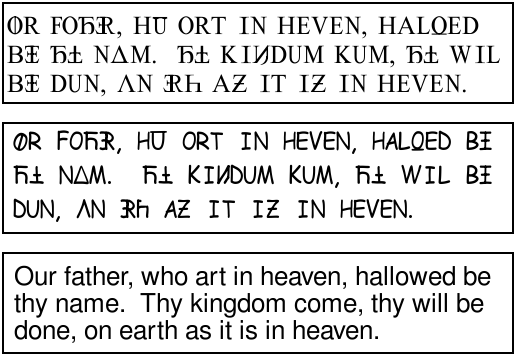Hashtags: #dogme21 #elt4 #clivage3 #polqc2 #thatcher2 #bêtise1 #croyance1 #méthode1 #dégâts1 #eltchat #dogme
Trying to seek a better understanding of Dogme language teaching…
Dogme language teaching is considered to be both a methodology and a movement - a communicative approach to language teaching that encourages teaching without published textbooks and focuses instead on conversational communication among learners and teacher (Wikipedia, 2015). Dogme has ten key principles:
- Interactivity: the most direct route to learning is to be found in the interactivity between teachers and students and amongst the students themselves.
- Engagement: students are most engaged by content they have created themselves
- Dialogic processes: learning is social and dialogic, where knowledge is co-constructed
- Scaffolded conversations: learning takes place through conversations, where the learner and teacher co-construct the knowledge and skills
- Emergence: language and grammar emerge from the learning process. This is seen as distinct from the ‘acquisition’ of language.
- Affordances: the teacher’s role is too optimize language learning affordances through directing attention to emergent language.
- Voice: the learner’s voice is given recognition along with the learner’s beliefs and knowledge.
- Empowerment: students and teachers are empowered by freeing the classroom of published materials and textbooks.
- Relevance: materials (e.g. texts, audios and videos) should have relevance for the learners
- Critical use: teachers and students should use published materials and textbooks in a critical way that recognizes their cultural and ideological biases.
The Twitter hashtag #dogmeelt was active from April 15, 2015 through June 21, 2014, but hasn’t seen much action since. Presumably, Twitter activity has migrated to the hashtag #dogme. Top hashtags include #dogme21 #elt4 #clivage3 #polqc2 #thatcher2 #bêtise1 #croyance1 #méthode1 #dégâts1 #eltchat1, while top languages include French and English (#dogme statistics, March 14, 2015).
It seems that the main reason Dogme came about was that English language teaching (according to Scott Thornbury)...
had become similarly dependent on a constant fix of materials and technology, at the expense of the learning possibilities that could be harvested simply from what goes on “within and between" the people in the room (to borrow Stevick's phrase). ELT needed a similar kind of "rescue action". (as cited in Meddings, 2003)
Others seems to agree. An ELT Dogme Yahoo Group was formed that shows an active message history being primarily between 2002-2011. Trending topics include ELF workshop and teaching project-based learning. The Yahoo group was founded in 2000, currently has 1,564 members, and includes a website link to Scott Thornbury.
I recently had a discussion about Dogme in LinkedIn where the following manifesto was presented as follows (derived from Dogme 95)…
- All teaching and practice of language must be done "in situ", in the real location. No fake props or sets but only using real language in a real location.
- Teaching is holistic. There must be no separation of function and form and language is treated not in discrete parts, nor dissected but rather as it is used.
- Technology must be simple and hand driven. Chalk, pencils, pens etc.... No use of electronic devices; computers, screens, CD players and so on. The speaker, the human being, is the focus.
- Teaching must be real. It can't be a play, a scripted event. The plan is that there is no plan other than the main objective to start things off. No fakery, no lying on the part of the teacher.
- Extrinsic motivators are forbidden. The class must not be tainted by point systems, rewards and competition.
- There should not be any role playing in the classroom (this is artificial). All language takes place and arises from a real need and impulse.
- No use of video to show learners language used in a different time and place. It all happens in the here and now.
- The teacher can't be an actor or use different teaching styles. Nor are there any different types of English to be taught (business, global studies, finance, hospitality and tourism etc...). The only English used is that of necessity that comes from the learner, there is no imposed structure given from the instructor.
- The class must be 10 or less students to facilitate real use of the language and proper instructor intervention.
- The teacher is part of the class and a learner. Credit goes to the whole class for any success, not just the teacher.
In summation, I can’t quite connect the Dogme 95 list to the Dogme Manifesto list above, and can’t quite reconcile the Dogme Manifesto list above with the ten principles listed at the beginning of this post. I´m willing to reservedly accept a definition like…
a communicative approach to language teaching that encourages teaching without published textbooks and focuses instead on conversational communication among learners and teacher…(emphasis added)
but can’t quite accept a definition like Dogme ELT is a materials light methodology (What is Dogme ELT?, n.d.).
The main problem I have with the notion of Dogme is the uncertainty in the use of the term "materials".
I use terms like authentic learning using authentic materials to describe many aspects that Dogme seems to embrace. This would also include the Socratic Method and many principles from Mortimer’s Paideia School. At this point, still am not compelled to use the term Dogme as a “rescue action”, although such action is definitely needed.









_by_William_Bliss_Baker.jpg)

